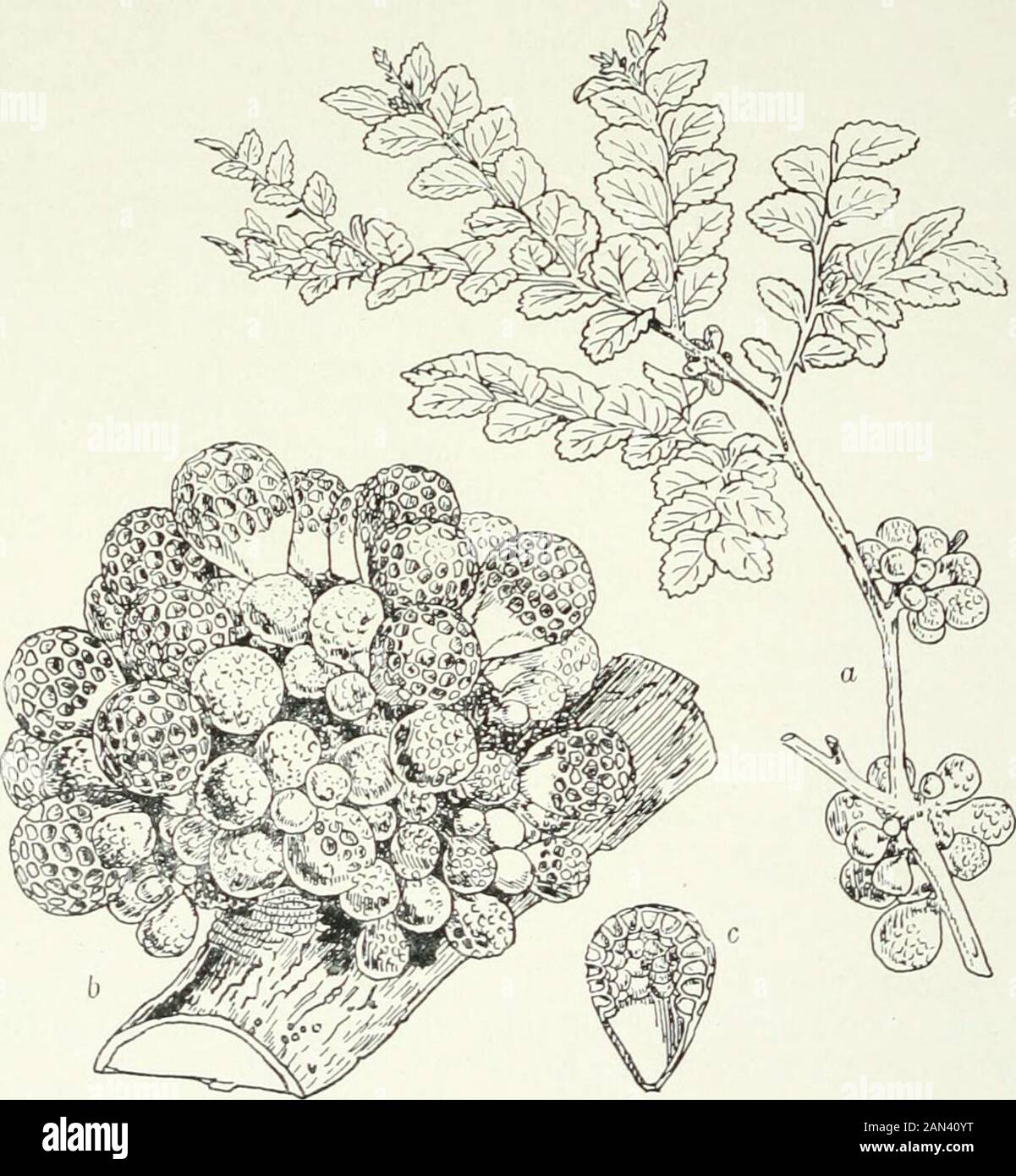Fungi, Ascomycetes, Ustilaginales, Uredinales . , where it wascollected by Darwin in 1.S33. 126 DISCOMYCETES [CH. In the beech forests, he says, the trees are much diseased; on therough excrescences grow vast numbers of yellow balls. They are of thecolour of the yolk of an egg, and vary in size from that of a bullet to thatof a small apple ; in shape they are globular, but a little produced towardsthe point of attachment. They grow both on the branches and stems ingroups. When young they contain much fluid and are quite tasteless, butin their older and altered state they form a very essential

Image details
Contributor:
The Reading Room / Alamy Stock PhotoImage ID:
2AN40YTFile size:
7.1 MB (378.8 KB Compressed download)Releases:
Model - no | Property - noDo I need a release?Dimensions:
1520 x 1644 px | 25.7 x 27.8 cm | 10.1 x 11 inches | 150dpiMore information:
This image is a public domain image, which means either that copyright has expired in the image or the copyright holder has waived their copyright. Alamy charges you a fee for access to the high resolution copy of the image.
This image could have imperfections as it’s either historical or reportage.
Fungi, Ascomycetes, Ustilaginales, Uredinales . , where it wascollected by Darwin in 1.S33. 126 DISCOMYCETES [CH. In the beech forests, he says, the trees are much diseased; on therough excrescences grow vast numbers of yellow balls. They are of thecolour of the yolk of an egg, and vary in size from that of a bullet to thatof a small apple ; in shape they are globular, but a little produced towardsthe point of attachment. They grow both on the branches and stems ingroups. When young they contain much fluid and are quite tasteless, butin their older and altered state they form a very essential article of food forthe Fuegian. The boys collect them and they are eaten uncooked withfish. He observed that they were smooth when young, the externalsurface marked with white spaces as of a membrane covering a cell; laterthe whole surface is honeycombed by regular cells. These are the separateapothecia, considerable numbers of which occur on the same stroma. Bertero, at about the same time, recorded that the Chilian species (C. Bcrteroi) threw. Fig. 87. Cyttaria Giinnii, Berk.; a. twig of Nothofagus Cunninghami with knobs bearing thefungus, x § ; b. group of stromata ; c. single stroma cut across; all after Berkeley. iv] HELVELLALES 127 out f these cavities an impalpable powder when it was touched, exactlyas is observed in the Peziza vesiculosa In all species the stromata seem to grow from a distinct disc (fig. 87), formed from the bark or the baric and wood of the host, and traversed inall directions by the mycelium, which doubtless gives rise to a fresh cropeach season. The asci are rather short ami cylindrical and contain eightOVi id spores. In C. Darwinii Berkeley observed that the lower part of the troma wasgranulated as if beset with a small, black, parasitic Sphaeria; Fischer inter-preted these structures as spermogonia or pyenidia, and was able to observethem on different parts of the stroma of C. Hookeriand C. Harioti. He alsonoted, below the developing apothecia of C.